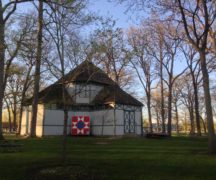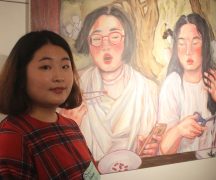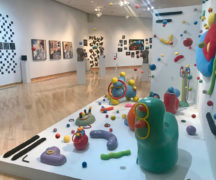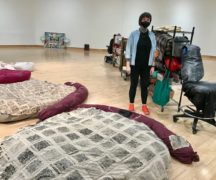By DAVID DUPONT
BG Independent News
The spring art exhibitions at the Bowling Green State University galleries are a progressive celebration of emerging artistry.
First comes the undergraduate show that excites with glimpses of emerging artistic vision and growing understanding of the artistic process and the materials at hand. Those cohere in collections of works featured in the BFA exhibition that lay out the direction these artists’ journey will take them.
Finally the MFA Exhibition, which opened Friday night and continues through April 30, shows how those seeds have blossomed.
That flowering happens not just in the two years of master’s study, but often in years of work and struggle between the artists’ undergraduate years and commencing their graduate studies. The exhibition features the work of eight artists: Joshua Alahira, Rebekah Alviano, Theo Brooks, Jeffrey Eden, Michael Andrew Hall, Chauncey Hay, Kathleen Pahl, and Anna Yates.
And for this year’s MFA class that two years of study has been disrupted by the pandemic. After a semester of normality, their second semester was bisected by the coronavirus, and they were banished from the campus studios, more or less to fend for themselves. The past two semesters have proceeded under the threat of infection and restrictions of pandemic protocols.
It seemed fitting to be walking through the exhibition, a couple hours before it opened, while some work was still being installed.
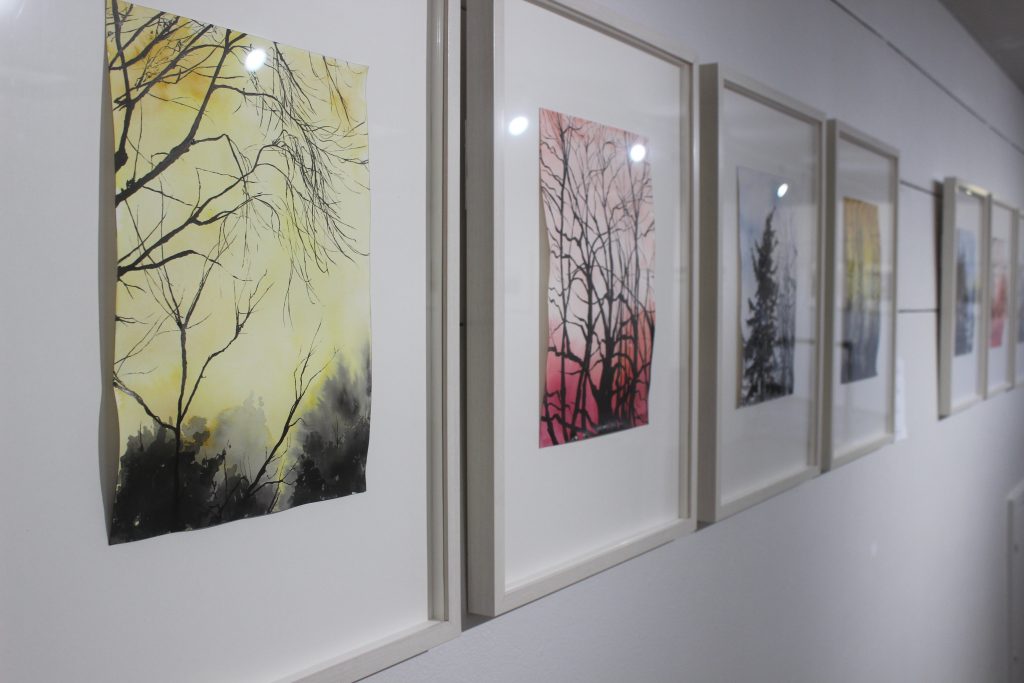
The power of the work though was evident even as its public presentation was still in the wings. In the Wankelman Gallery, the viewer moved warily around a lift bearing a worker checking lights. In the Bryan Gallery, chairs were arrayed around room in preparation for the opening ceremonies.
Still, Pahl’s monumental abstract paintings seem to burst out of the walls of the Bryan Gallery, providing light and energy of their own. The podium was placed directly in front of one of her paintings, so it could provide the backdrop for the speakers that evening.
Charles Kanwischer, director of the School of Art, spoke of the trials faced by artists, that discourage them, and may even make them question their artistic vocations.
“What I see in this exhibition is evidence … that you are ready for these periodic tests.”
He continued: “I don’t want to tidy up or minimize the very real academic and personal difficulties you’ve endured and are enduring. The pandemic is not over, and its impact will be with us for a long time. It will be less acute, but its trauma will linger for a long time.”
In their comments, the graduates thanked their teachers, and life partners, and in some instances children, who may be close, or at times distant.
The work in the show grapples with a variety of aesthetic issues and acute worldly concerns.
Alahira, who came to BGSU from Nigeria, envisions in his design homes where humans and animals can share space, instead of having people displace wildlife.
In Alviani’s multimedia installation, “Transience,” it is the humans who’ve been displaced. Through photographs and taped testimony she reflects on Yellow Dog Village, a place in Pennsylvania that had to be abandoned because its water sources were contaminated.
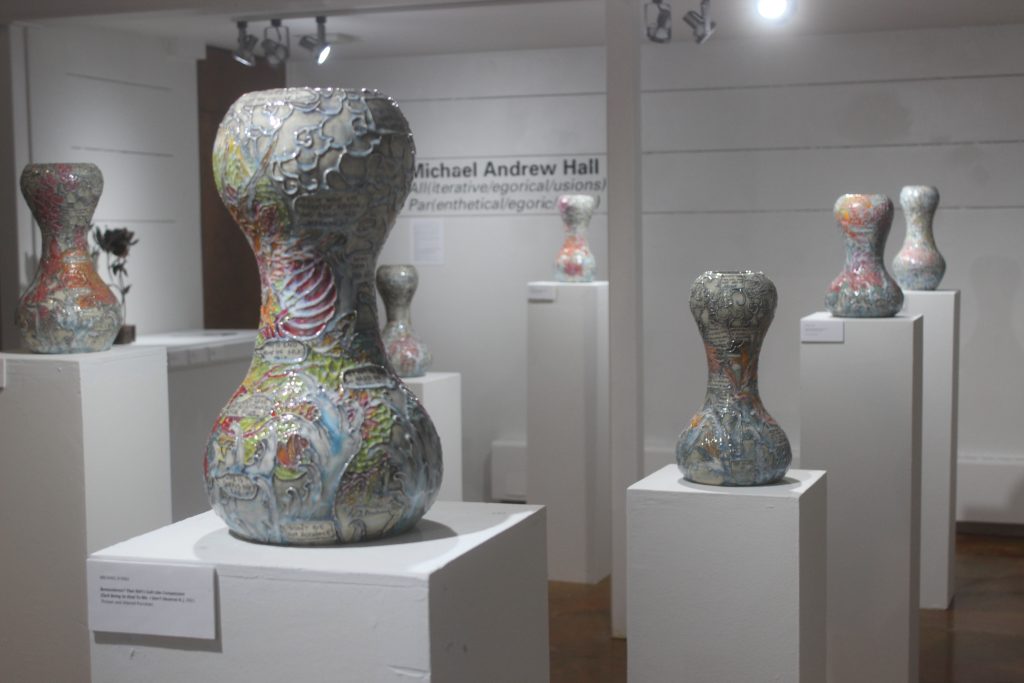
In his sculptural ceramics, Hall creates brilliant, decorative surfaces that have embedded in them trenchant, sometimes sarcastic sayings that express social unease and anger.
Brooks, who comes from England, draws on mythology to create his sculptural glass works.
Hay creates collages with layers of memory from the images in his Google Photos library.
Eden using ink and paint literally captures moments in time his series “Canopies,” which depicts the crowns of trees at specific times and dates.
Anna Yates’ drawings with their out of place objects – a goblet, spectacles reflecting a room, a toy train – geometric patches and white spaces offer entry points to implied stories.
Kanwischer said the work in show for all its diversity makes him hopeful. “I see in this in this exhibition an obvious deep regard for each other and our community of makers and scholars manifest in the high level of craft and care invested in the work and its presentation. Your work strikes me as connected by a belief in the assuaging and healing power of art. That’s why it feels so good to be here tonight.”


